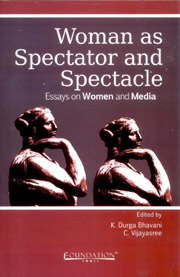Book contents
- Frontmatter
- Contents
- Notes on Contributors
- Preface
- Introduction
- Part I Media and Gender (In)Justice
- 1 Wanted: A Gender Perspective on Media Globalisation
- 2 Media Texts for Women by Women
- 3 Media-ting ‘Patriarchy’
- 4 The Endangered Gender: Images of Women in Advertisements
- 5 Woman in Visual Media: The Spectator vs. the Spectacle
- 6 Two Faces of Women on Television: Need for a Gender Policy
- Part II Framing Women
3 - Media-ting ‘Patriarchy’
from Part I - Media and Gender (In)Justice
Published online by Cambridge University Press: 05 November 2011
- Frontmatter
- Contents
- Notes on Contributors
- Preface
- Introduction
- Part I Media and Gender (In)Justice
- 1 Wanted: A Gender Perspective on Media Globalisation
- 2 Media Texts for Women by Women
- 3 Media-ting ‘Patriarchy’
- 4 The Endangered Gender: Images of Women in Advertisements
- 5 Woman in Visual Media: The Spectator vs. the Spectacle
- 6 Two Faces of Women on Television: Need for a Gender Policy
- Part II Framing Women
Summary
“Because I'm worth it!”! This punch-line for a TV (and print media) advertisement, uttered in a very confident tone by a ‘reigning beauty’ of our times, endorsing a high-priced imported range of cosmetics, encapsulates many aspects of what the media has come to represent. It has an obvious visual-cum-celebrity appeal, wide reach, and is tapping ‘aspiration’-al (a clichéd word by now) desire among the target audience; the impact it makes, reinforces the fact that the media is ‘objectifying’, ‘stereotyping’, ‘commodifying’ women, the feminine, female sexuality, and so on.
This paper attempts to go a little beyond this litany of charges nailing the media for perpetuating patriarchy. The objective of the paper is to contextualise what appears to be an ‘unstoppable’ phenomenon and to interrogate the place of feminist theory in all this. A brief appraisal of critiquing media portrayal will be followed by a postulate to understand the role played by the interplay of the ‘two economies’ involved. The dominance of the media, particularly that of the technological media, appears ‘unstoppable’ as the communication industries are proving to be among the most lucrative of all avenues, generating profits in mindboggling numbers world-wide. In India, as consumers, we are witness to the astonishing rise of communications technology and the related entertainment industry. These have certainly resulted in more employment opportunities, more revenue and given the electronic media's obvious control over its own hype, the whole thing has ‘come of age’ – a recurrent cliché which translates into appreciating all the programmes/products which are closely modelled on everything that is the current rage in the West.
- Type
- Chapter
- Information
- Woman as Spectator and SpectacleEssays on Women and Media, pp. 25 - 33Publisher: Foundation BooksPrint publication year: 2010

